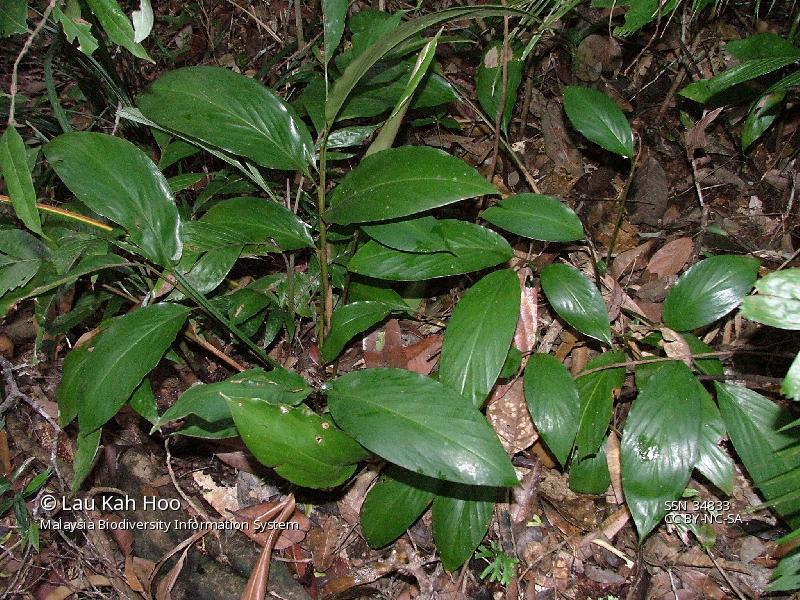Gunung Tahan, the highest peak in Peninsular Malaysia, stretches across three states, i.e. Pahang, Terengganu and Kelantan. It is a mountain popular with avid and seasoned hikers, with challenging treks. The mountain itself is located in the vicinity of the Pahang National Park and managed under the authority of the Department of Wildlife and National Parks Peninsular Malaysia (PERHILITAN) with a Totally Protected Area status. The summit of Gunung Tahan is 2187 m above sea level.
Geostachys tahanensis is a small-sized ginger described by R.E. Holttum in 1950 (Holttum, 1950). The leafy shoots are tufted and up to 50 cm in height. The leaves are between 19.5 and 26 cm in length and 6.8 to 9 cm in width, elliptic, glabrous and reddish underneath when young. The inflorescences are usually curved downward with the pale yellow flowers arranged on one side. Not much is known about the characteristics of the flower as descriptions provided on the old herbarium specimens dated the early 1900s, are not comprehensive and are mostly in poor condition. Furthermore, a recent collection made by the author in 2005 was a fruiting specimen without flowers. On the other hand, the fruits are ovoid, glabrous and chili red in colour, measuring about 1.2 × 1.4 cm. As with other Geostachys, the rhizomes are well supported above ground by its stilt roots.
As its name suggests, G. tahanensis was first found on Gunung Tahan and its distribution has not changed much since then. This is because the species has not been found at other locations during subsequent searches. Currently, the species is hyper-endemic, i.e. only to be found in its type locality, which is around the area of Wray’s Camp, a camp site of about a thousand meters in elevation. While no prominent threats are currently identified in its habitat, the population which for the moment is only known to consist of several clumps, is restricted to the site where it grows on loose soil in the understorey. The species is categorised as Vulnerable (VU) following the modified Malaysian Red List Categories (Chua, 2012).

